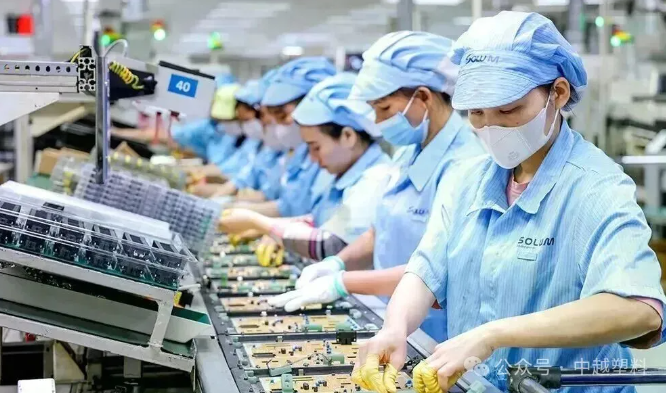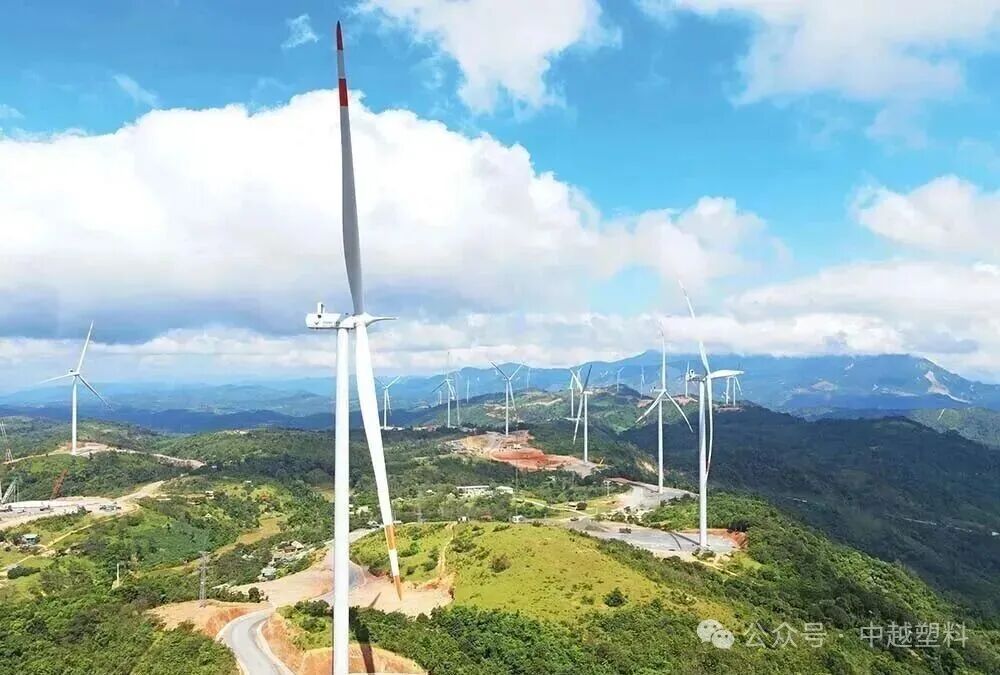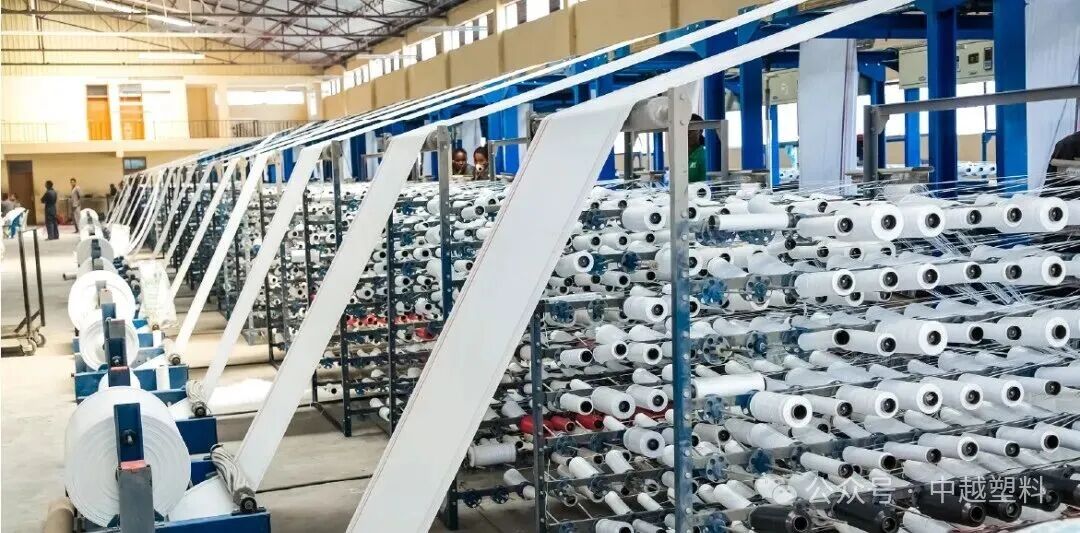Vietnam: Manufacturing Secrets of the North, Central, and South Regions Summarized!
In the wave of global industrial chain restructuring, Vietnam has emerged as the core hub of Southeast Asian manufacturing by leveraging policy incentives, geographical advantages, and cost competitiveness. Its industrial layout is not scattered but has formed three major clusters with the northern, central, and southern regions as focal points. Each cluster builds a differentiated industrial ecosystem relying on specialized industrial parks.
01 Northern Region: Hanoi as the core, the "Northern Engine" of electronic manufacturing

Core Industries: Electronics and Automotive Components
The industry labels of the northern cluster are highly focused—smartphones, consumer electronics, and automotive parts constitute the three main pillars. Samsung has established the world's largest mobile phone production base in the Que Vo Industrial Park in Bac Ninh Province, with an annual production capacity of 150 million units, driving the aggregation of over 200 supporting enterprises upstream and downstream. LG has invested $6.5 billion in the Trang Due Industrial Park in Hai Phong City to build an OLED panel factory with an annual production capacity of over ten million units. Additionally, Great Wall Motors has set up the first complete vehicle factory in Southeast Asia in the Son Tay Industrial Park in Hanoi, accelerating the formation of the automotive parts industry.
"Benchmark Park and Policy Advantages of Beining Anfeng Industrial Zone"
Attract Intel and TSMC to establish packaging and testing production lines, relying on the "15-year tax exemption for high-tech enterprises" policy to become a semiconductor industry hub. Hai Phong Dinh Vu Economic Zone: Leveraging the advantages of a deep-water port and the benefits of free trade agreements to achieve seamless integration of "component import - manufacturing - global export," reducing logistics costs by 12% compared to inland parks. Hanoi Hoa Lac High-Tech Park: Focusing on 5G equipment and smart manufacturing, Viettel, the Vietnam Military Telecommunications Group, is setting up core production lines here, with R&D investment accounting for 8% of the park's total output.
Central Vietnam: Da Nang Rises as the "Future Corridor" of Green Technology
The central cluster centered around Da Nang, encompassing provinces such as Quang Nam and Phu Yen, is a "rising star" in Vietnam's manufacturing industry. With government policy support and coastal location advantages, this region is transitioning from resource-based industries to high-tech and green energy, becoming a new hotspot for global industrial relocation.
Core Industries: Semiconductors, Renewable Energy, and Logistics
Central cluster precisely targets high-growth sectors: Da Nang High-Tech Park focuses on cutting-edge fields such as 3D printing and microelectronics, with Foxconn establishing a smartphone assembly line here with an annual production capacity exceeding 20 million units; Quang Ngai Province's Rong Kien Economic Zone leverages its refining industry base to develop heavy machinery manufacturing; while Phu Yen Province concentrates on wind power equipment and photovoltaic modules, with SolarBK's hundred-megawatt solar plant already in operation. At the same time, Da Nang, as a transportation hub, is building a logistics transit center connecting the north and south.

Benchmark Park and Development Potential of Da Nang High-Tech Park: Enjoy a "10-Year Tax Exemption + Half Rent Reduction" policy, introducing an Airbus maintenance and training base to promote the development of the aerospace supporting industry. Quang Ngai-Rongji Economic Zone: As a key petrochemical base in Central Vietnam, the Vietnam National Oil and Gas Group is constructing a refining complex here, achieving a full-chain layout of crude oil processing and downstream product manufacturing. Phu Yen Renewable Energy Park: Leveraging an annual average of over 2,000 hours of sunlight, it attracts investments from Singaporean companies in wind power equipment manufacturing, aligning with Vietnam's national goal of "47% renewable energy by 2030." Quy Nhon: A furniture export base in Central Vietnam, focusing on wooden furniture and processing industry, with most factories concentrated in Phu Tai Industrial Park, while the supply chain is well-established.
The southern cluster centered around Ho Chi Minh City, encompassing the provinces of Binh Duong, Dong Nai, and Ba Ria-Vung Tau, is the "ballast" of Vietnam's manufacturing industry. This area contributes over 40% of the country's industrial output, has the highest factory density in Vietnam, and is highly export-oriented.
Core Industries: Textiles, New Energy, and Chemicals
The southern cluster presents a diversified pattern of "simultaneous development of light and heavy industries." Textile and apparel is a traditional advantageous industry, with the My Phuoc Industrial Park in Binh Duong Province gathering global supply chain enterprises like Pou Chen Group, producing over 300 million garments annually. The new energy vehicle industry is rapidly rising, with Ho Chi Minh City's Thu Duc High-Tech Park introducing power battery production lines from Panasonic and LG. In the chemical field, Ba Ria-Vung Tau Province serves as the core, with the Vung Tau Industrial Park having built Vietnam's first million-ton ethylene plant, with an annual output value exceeding $5 billion.

Benchmark Parks and Location Dividends in Vietnam - Singapore Industrial Park (VSIP): As one of the most successful cross-border cooperation parks in Southeast Asia, it hosts over 300 enterprises including Precision Electronics and Toyota Motor, with an annual output value exceeding $8 billion. It provides "one-stop administrative services" to complete corporate registration within 7 days. Ho Chi Minh City Tan Thuan Export Processing Zone: Intel and Samsung have established regional headquarters here, with annual exports exceeding $5 billion. It leverages the Ho Chi Minh port group to achieve efficient logistics where "products reach international ports within 48 hours of leaving the factory." Dong Nai Bien Hoa Industrial Zone: Companies like Bridgestone and Mitsubishi Heavy Industries have settled here, with an annual tire production accounting for 40% of the national total. It takes advantage of the railway network to quickly reach surrounding markets such as Cambodia and Laos.
From the electronics manufacturing in the north to the export hubs in the south, and the green innovation in the central region, Vietnam's three major manufacturing clusters each have their own strengths. For companies seeking a global presence, understanding this spatial blueprint is the key to entering the Southeast Asian market.
【Copyright and Disclaimer】The above information is collected and organized by PlastMatch. The copyright belongs to the original author. This article is reprinted for the purpose of providing more information, and it does not imply that PlastMatch endorses the views expressed in the article or guarantees its accuracy. If there are any errors in the source attribution or if your legitimate rights have been infringed, please contact us, and we will promptly correct or remove the content. If other media, websites, or individuals use the aforementioned content, they must clearly indicate the original source and origin of the work and assume legal responsibility on their own.
Most Popular
-

Fire at Sinopec Quanzhou Petrochemical Company: 7 Injured
-

DuPont plans to sell Nomex and Kevlar brands for $2 billion! Covestro Declares Force Majeure on TDI / oTDA-based / Polyether Polyol; GAC Group Enters UK Market
-

Zf asia-pacific innovation day: Multiple Cutting-Edge Technologies Launch, Leading Intelligent Electric Mobility
-

List Released! Mexico Announces 50% Tariff On 1,371 China Product Categories
-

[International News] European Plastic Recycling Industry on the Verge of Collapse! BASF Plans to Spin Off This Business, Lanxess Faces Pressure in Third Quarter Performance






